The world’s largest island is also one of the most eco-friendly, with close to 70% of Greenland’s energy production coming from renewable sources. There’s sun, sand and sea, and on the day of DirtFish’s arrival in T-shirt and shorts it was a balmy 60F in the Arctic Circle. Ah, that’s not good.
With the amount of sunlight Greenland gets in the summer months, it’s not too surprising to see such temperatures. But it’s happening more often in a place best known for being covered by the only permanent ice sheet outside of Antarctica. And that’s the big issue attracting Extreme E to race there this weekend.
Before we were given the bleak scientific facts, the media were invited to a campfire with local beers to quite literally warm us into the Danish autonomous territory. There, we were able to trade stories with fellow visitors, as well as the brains of Visit Greenland who have welcomed XE as part of a tourism push to build an increasingly independent economy.
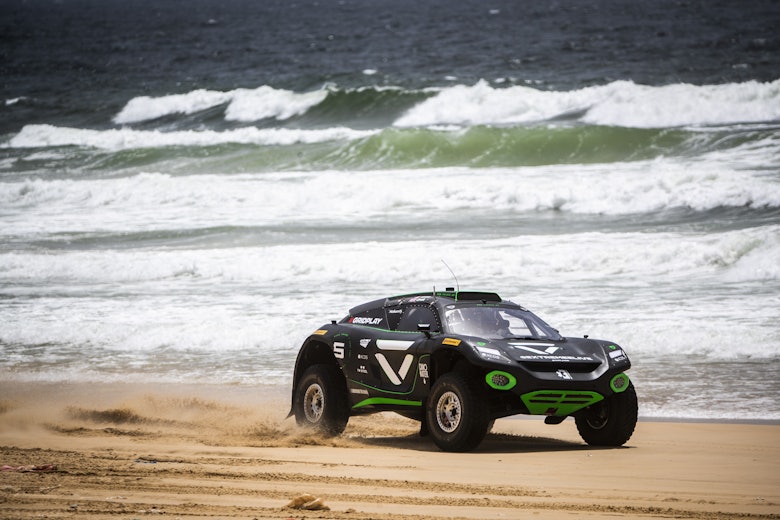
What followed was a nice night of sleep – probably because of the beer – and then an early start to get a bus out to the ice shelf. Previous visitors would have had a shorter commute, but the melting ice means its edge has receded significantly.
The ice that XE had brought teams and media to was also grey, rather than gleaming white, and our task was to essentially get down on our hands and knees – on a slippery, windy and cold ice sheet – to scratch out some of this dirty ice to find out its origins.
The dark color was in fact black carbon, which is a product of high temperature and incomplete combustion of materials. Sources include diesel generators, coal and wood fires, and analyzing particles in the ice would reveal which of those was the culprit. The number one candidate was the forest fires that have recently ravaged California, southern Europe and the Siberian permafrost.
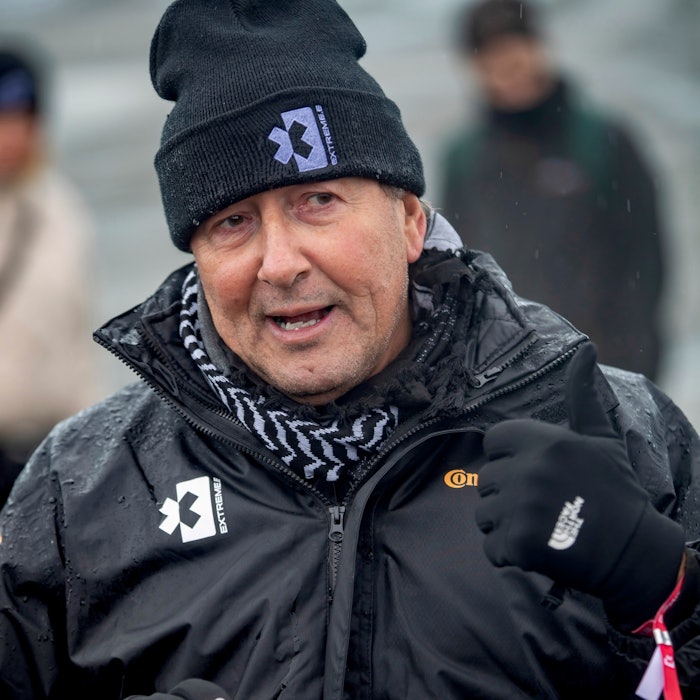
What matters is what color the ocean and the ice caps are in the summer, and that’s when we’re losing iceProfessor Carlos Duarte
Carbon from such fires easily gets picked up by winds that can carry it 1000s of miles and when it lands on ice it absorbs the solar radiation the bright white would usually reflect, and then eventually expels that as heat, thus accelerating the melting of the ice, and therefore leading to more fresh water being expelled into the oceans, a resultant rise in sea levels and weakening the effect of THC.
That’s thermohaline circulation, which regulates the currents that guides hot and cold air and water around the globe and prevent New York from being in a permanent winter, rather than the chemical compound.
DirtFish asked XE’s climate change scientist Professor Carlos Duarte about the spiral of decline being caused by the melting some 40 minutes away from the Arctic X-Prix track.
“This is about everything that affects what we we call the albido, or the color of the ice,” he said.
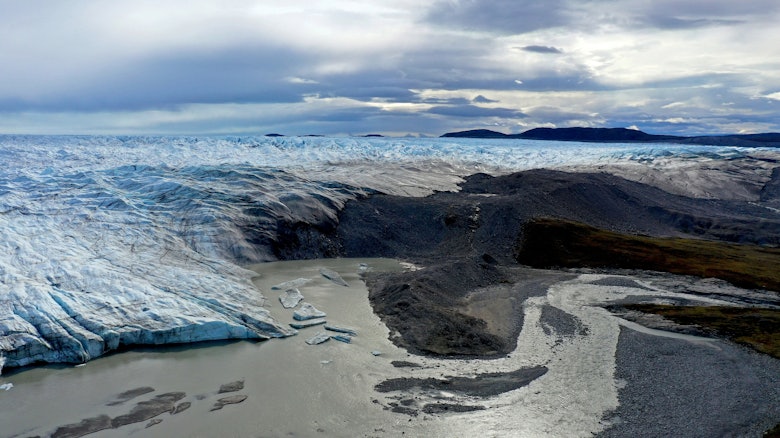
“So white ice reflects solar radiation about 90%, so it’s not absorbed, it’s just reflected back like a mirror, and it doesn’t matter that there’s a lot of ice. Some people think that ‘oh yeah, but in the winter the ice grows back again’. It doesn’t matter how much ice there is in the winter because there is no light. In the winter, it’s dark 24 hours a day, so it doesn’t matter what color the ocean is.
“What matters is what color the ocean and the ice caps are in the summer, and that’s when we’re losing ice. So anything that changes the color from bright white to anything that is darker will absborb solar radiation.
“And that solar radiation will be released as heat, and will continue to melt it.
“There’s also the process of the ice being melted from the inside. When I had [my first Arctic trip in 2007], it was a wake-up call for me. At that point the Intergovernmental Panel on Climate Change (IPCC) released one of their reports, they were predicting the future of sea ice in the Arctic.
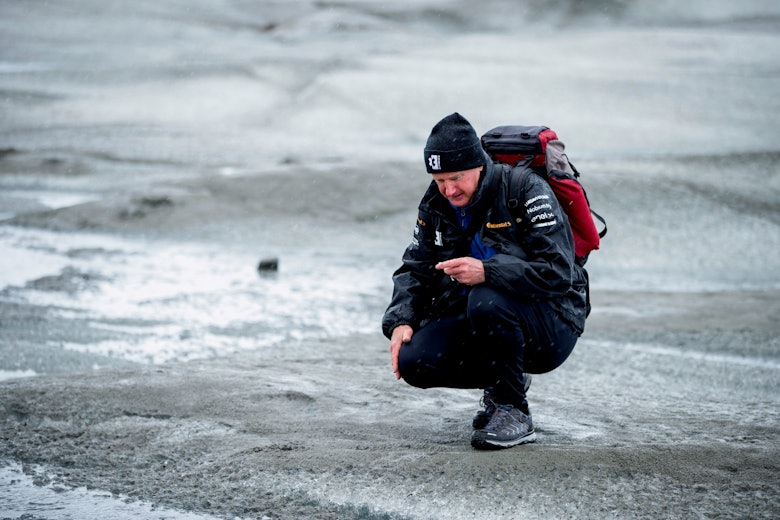
“By the time the report was released, the model was already wrong. Because what happened in 2007 was what the IPCC was predicting in the report will be happening in around 2040. So just imagine that’s 32 years of melting go in just one year.
“Melting of the ice is a very complex process, and it’s a non-linear process. You’d think it’s simple: you heat the water above zero degrees Celsius, then it’s liquid, then you cool it below zero degrees, then it’s ice. But it’s a strongly non-linear system and when you set it in motion it’s very difficult to stop. So this ice sheet is destabilized.”
The side-effects of this very specific ice sheet’s melting went on, including toxic Mercury deposits in the colossal amounts of sediment moved by the melting that are increasing cancer cases, breaking ice and glacial lake floods that were causing tsunamis and record rainfall, and uniquely a localized lowering of the sea level. There is very rarely rainy days in this area, DirtFish was told, but it rained a lot while on the ice.
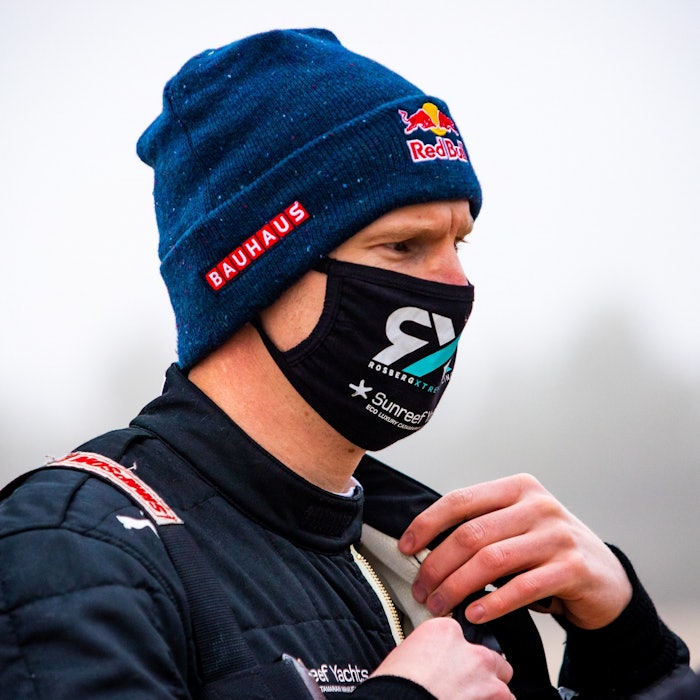
"Both me and Timmy used to do it at home. I lived near a frozen lake, so I used to do some ice bathing thereJohan Kristoffersson on his frozen dip
It wasn’t all bleak though, with it being revealed we were breathing 7,000-year-old air that had escaped the ice, learning about the full scale of the shelf – which would take over three weeks to cross from west to east, and enaging in some healthy competition.
In the ice-sampling stakes it was JBXE duo Kevin Hansen and Mikaela Åhlin-Kottulimsky who worked together to collect at least 10 samples each, while their team principal Jenson Button won the ‘least appropriate footwear for traversing a glacier in’ competition by making the trek in plimsoles.
DirtFish finished second to Button there, and second only to a very hardcore local guide in the ‘least layers worn’ contest. On the way back, a race across the rocky, undulating terrain against Veloce Racing’s Stéphane Sarrazin was a dead draw. Really, we both ran to keep warm.
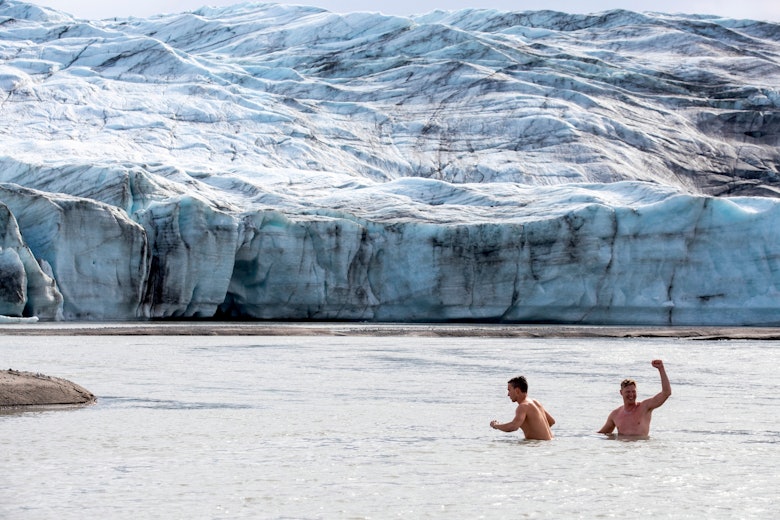
On the return from the main part of XE’s legacy project in Greenland, there was a picnic stop at the scenic Russell Glacier. DirtFish pushed the boundary by putting a hand in the meltwater and deeming it not too cold, so Rosberg X Racing’s Johan Kristoffersson and Andretti United’s Timmy Hansen jumped over that boundary near naked for a swim.
Hansen admitted to DirtFish shortly after returning to land – having fully submerged himself in the 33F water – that he was fueled by competition. Kristoffersson said they had previous.
“Both me and Timmy used to do it at home [in Sweden],” he explained. “I lived near a frozen lake, so I used to do some ice bathing there at home.”
Hansen used his rival’s experience as an excuse:
TH: “Yeah you have done a lot of because you live just by the lake. I’ve done a bit of icebathing, but not for a few years, but you’ve done more recently.”
JK: “So last year I did 60-70 times. And now it’s just an opportunity.”
TH: “Because we are in Greenland and that’s melted ice right thetre.”
JK: “You can not get colder water.”
There was much inmuendo from bemused team-mates and rivals watching on, but Kristoffersson was serious about his dip and learning how an athlete’s body responds to a sudden temperature drop. Hansen meanwhile finished by saying it was a bucket list item ticked, which makes you wonder what the rest of his bucket list looks like…
After that oddest of stops, the XE crews finally went to the site of the circuit itself. DirtFish’s impressions will have to wait until we tackle the lap with the drivers on Thursday. And once we find a way back from the XE media tent to the accommodation in Kangerlussuaq over 11 miles west.





